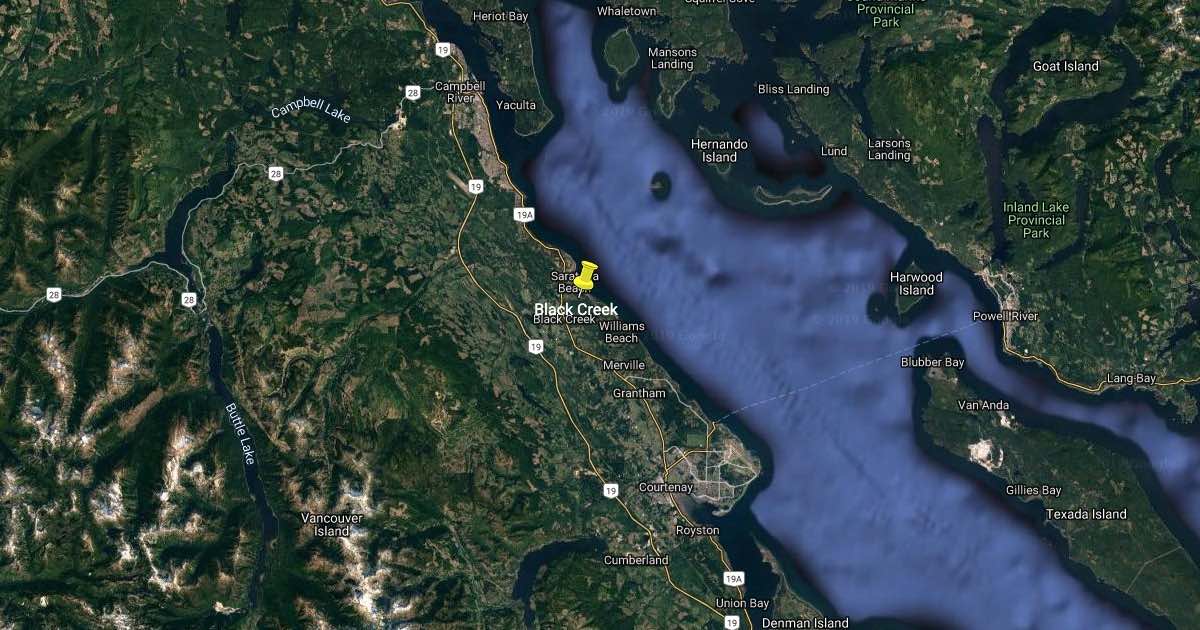
The Black Creek is old. Located between Campbell River and Courtenay on Vancouver Island, it strolls gently from the lips of the Salish Sea into the heart of salmon heaven. It’s never deep, never really big. But it spawns a magnificent run of wild coho. It has for ages.
The waterway has avoided major development from top to bottom and is a living tribute to how small creeks used to contribute to west coast salmon runs.
There is a significant amount of agricultural lands in the watershed, which contribute high volumes of nutrients to the water course. While the upper watershed has been logged over time, there are water control devices to store water for summer irrigation and fish rearing.
And after all those years, Black Creek has gone online.
It is part of an extraordinary effort by the A-Tlegay Fisheries Society and the Department of Fisheries and Oceans (DFO) to give even more attention to a watershed that is a key wild coho indicator stream in the Strait of Georgia.
DFO first put in a counting fence just upstream of the creek’s mouth in 1985. It provides one of DFO’s longest standing and continuous data sets for coho in the province. Salmon can’t get into or out of the creek without passing the gate. A perfect scenario for fisheries science.
Over the years, A-Tlegay Fisheries Society and DFO have made improvements to the fence and the creek but in recent years, those improvements have escalated dramatically. Including the online connection.
Source: DFO Black Creek Hobo – Primary Salmon Species: Coho |Secondary Salmon Species: None | Distance from Ocean: < 1km
The two organizations have made technological and infrastructure improvements including bank and foundation rebuilds, bank stabilization using live willow staking and they’ve brought in power and internet to the site. They have also rebuilt parts of the fence.
“In terms of technology, bringing in power and internet makes a lot more things possible,” said Andrew Pereboom, of DFO. “We now install video boxes to monitor adult migration outside the fence-staff working window. Fish swim through the camera boxes and the video footage is recorded. These video files are reviewed and added to the total fish count.”
Passive Integrated Transponders (PIT)
And the investments continue. The two organizations are experimenting with Passive Integrated Transponders (PIT). Small glass PIT tags are implanted in juveniles leaving Black Creek each spring and monitoring occurs each fall in adult returning fish. The PIT tagged fish simply swim over a detection antenna embedded in the stream and unique identification codes are electronically recorded and stored.
Pereboom says that so far, the results are looking promising.
He said, “The main purpose of the PIT tagging is to help DFO understand ocean marine survival, which has been very poor in recent years.”
Hydromet Stations
DFO also installed a weather station, called a hydromet, one of several similar sites set up by DFO all around the South Coast. With the hydromets, DFO can track and monitor rainfall and stream depth which, says Pereboom, DFO is building discharge curves for.
Real-Time Hydrometric Data
Pereboom cautions that their work is not to be confused with that done by the Water Office. He said the Water Office has a real time station on the Oyster and Salmon rivers, to name a few, that are much more accurate. The fence started operations in 1985, and is one of DFO’s longest standing and continuous data sets for coho.
Each year A-Tlegay Fisheries Society operates the fence and conducts both adult and juvenile counting work. Said Pereboom, “They are the key players in collecting information needed by DFO and making it all happen.” Founded in 1999, the A-Tlegay Fisheries Society was the result of collaboration of these five member nations; We Wai Kai, Wei Wai Kum, K’omoks, Tlowitsis and Kwiakah Nations.The return of adult cohos to Black Creek in 2019 was 910 adults and 2,670 jacks. Historically that is about the third lowest since the gate was installed. The best return was in 2001 when 12,000 coho returned to the creek. But with the investments made by the A-Teglay Fisheries Society and DFO, the future looks promising.
Visit the Store
$34.99
$34.99
Featured Catch
Joel Unickow halibut (Photo: Rob Frawley Lucky Strike Sportfishing Tofino)



